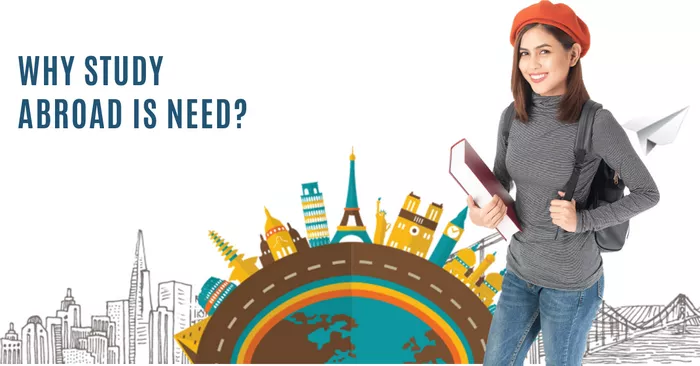Canada, with its diverse landscapes, vibrant cities, and welcoming communities, attracts millions of visitors, students, workers, and potential residents from around the globe each year. Whether you’re planning a short visit, pursuing higher education, seeking employment opportunities, or aiming for permanent residency, understanding the visa application process is crucial. This article aims to demystify the journey of obtaining a Canadian visa by providing a step-by-step guide, essential information, and practical tips for a successful application.
1. Understanding the Different Visa Types:
Clear and concise explanation: Canada offers various types of visas to accommodate different purposes of travel, including visitor visas, study permits, work permits, and permanent residency.
Categorization: Visa types can be grouped based on the purpose of visit, such as tourism, study, work, or immigration.
Eligibility Criteria: Each visa type has specific requirements regarding factors like intent of visit, financial stability, ties to home country, and admissibility.
Key differences: While visitor visas are suitable for short-term stays, study permits are for individuals pursuing academic programs, work permits cater to employment opportunities, and permanent residency is for those seeking to settle permanently in Canada.
2. Step-by-Step Application Process:
Simplified language: The application process is straightforward but requires attention to detail. Here’s a simplified breakdown:
Determine eligibility and select the appropriate visa category.
Complete the online application form or paper application if applicable.
Gather required documents, including identification, financial proofs, and supporting letters.
Pay the application fees.
Submit the application and biometrics if required.
Attend interviews or medical examinations if necessary.
Await decision and follow up if needed.
Detailed explanations: Each step of the application process demands thorough understanding and adherence to instructions provided by Immigration, Refugees, and Citizenship Canada (IRCC).
Document checklist: Essential documents may include passport, photographs, proof of funds, letter of acceptance (for study permits), employment offer letter (for work permits), and medical examination reports.
Tips for successful application: Ensure accuracy and completeness of information, submit applications well in advance, and provide genuine and consistent documentation to enhance the chances of approval.
3. Online Application System (IRCC Website):
Detailed guide: The IRCC website serves as the primary platform for visa applications. Navigate to the appropriate section based on your visa category.
Screenshot examples: [Insert screenshots here]
Troubleshooting tips: In case of technical issues, try clearing browser cache, using a different browser, or accessing the website during off-peak hours. If problems persist, contact IRCC support for assistance.
Account creation and login instructions: Create an account on the IRCC website using valid email credentials, and follow the prompts to log in and access the application portal.
4. Visa Fees and Payment Options:
Breakdown of fees: Visa fees vary depending on the type of visa and processing time. Refer to the IRCC website for the latest fee schedule.
Payment methods: Payment can be made online using credit/debit cards or through designated financial institutions. Ensure sufficient funds and check currency conversion rates if applicable.
Potential additional fees: Additional costs may include biometrics fees, courier charges for document submissions, and translation expenses for non-English/French documents.
5. Processing Times and Timeline:
Expected processing timeframes: Processing times vary based on visa type, volume of applications, and current workload. Refer to the IRCC website for estimated processing times.
Factors influencing processing time: Factors such as completeness of application, accuracy of information, background checks, and country-specific considerations can affect processing speed.
Tracking application status: Applicants can track their application status online using the unique application number provided upon submission.
6. Visa Requirements and Documentation:
Specific document checklist: The IRCC website provides detailed lists of required documents for each visa type. Ensure all documents are authentic, up-to-date, and meet the specified criteria.
Sample document formats: Documents must be in specified formats, such as PDF or JPEG, and adhere to size and resolution guidelines. Passport photos should meet biometric standards.
Translation requirements: Documents not in English or French must be accompanied by certified translations from authorized translators.
7. Interview and Biometrics:
Explanation of interview process: Interviews may be required for certain visa categories to assess the applicant’s intentions, qualifications, and admissibility. Prepare by reviewing application details and being honest and concise in responses.
Biometrics collection: Biometric information, including fingerprints and photographs, is collected at designated centers to verify identity and prevent identity fraud.
Locations and scheduling: Biometrics collection centers are located in various cities globally. Schedule appointments in advance through the IRCC website or authorized service providers.
8. Visa Approval and Refusal:
Notification of decision: Applicants are notified of visa decisions via email or through the online application portal. Approval grants a visa label in the passport, while refusal reasons are provided in writing.
Reasons for refusal: Common reasons for visa refusals include incomplete applications, insufficient funds, misrepresentation, and concerns regarding ties to home country or intent to return.
Appeal process: Applicants have the right to appeal visa refusals within a specified timeframe. Follow the instructions provided in the refusal letter for initiating the appeal process.
9. Post-Visa Approval Procedures:
Travel arrangements: Once the visa is approved, make travel arrangements including booking flights, accommodation, and transportation within Canada.
Arrival procedures: Upon arrival in Canada, proceed through immigration and customs clearance, where officers may ask questions about the purpose of visit and duration of stay.
Important information for new arrivals: Familiarize yourself with Canadian laws, healthcare services, banking facilities, and local resources to facilitate a smooth transition and settlement in Canada.
Conclusion
In conclusion, obtaining a Canadian visa involves a structured process that demands careful attention to detail, adherence to guidelines, and preparation at each stage. By understanding the visa types, following the application process diligently, and utilizing available resources, individuals can increase their chances of a successful visa application and embark on their journey to explore or settle in the beautiful land of Canada.




















